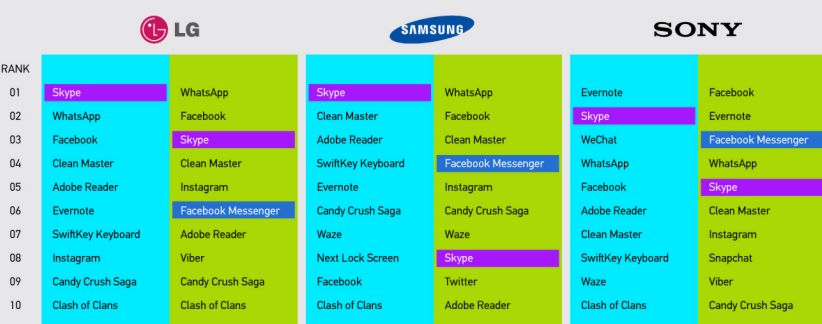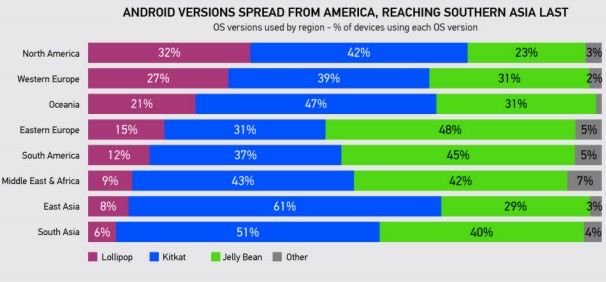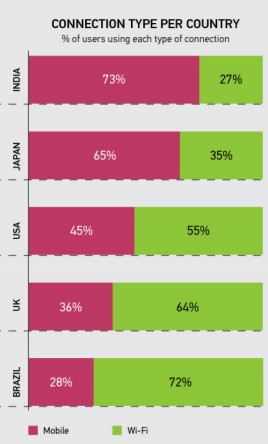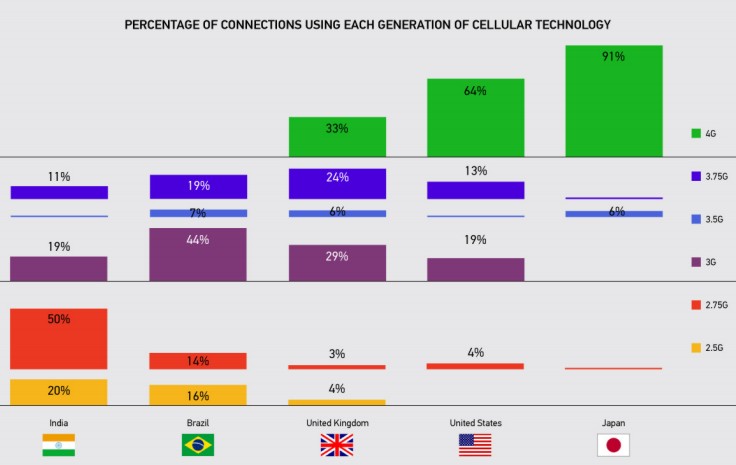| Insights Into Android Usage |
| Written by Janet Swift |
| Wednesday, 06 January 2016 |
|
A recent report from Vision Mobile shows that new versions of Android take time to spread around the globe and points up interesting ways in which geography influences the way users interact with their handsets. It also reveals differences between low end and high end handsets with social networking put ahead of productivity on cheaper (less than $200) smartphones. On high end Samsung and Sony phones productivity is even ahead of communication.
When it comes to communication the report points out another finding which is that among higher-end handsets Skype is the most common application installed. It also notes that Facebook Messenger is only popular on low-end phones.
As the title Global trends in Android Use 2015 suggests much of the data analysis is looking for regional differences. The usage data on which the report is based was collected across 209 countries in the period April to July 2015 which explains why Android Lollipop is the most recent Android version. It comes from devices that have the Celltick Start app installed - either preloaded or downloaded directly by the customer from Google Play. For developers wanting to reach a global market this chart regarding the dissemination of Android versions is interesting.
Commenting on the the report states: New OS versions (Lollipop) first penetrate the mature markets of North America, Western Europe and Oceania. These markets spend more on smartphones (in part thanks to the persistence of operator subsidies), which are needed to run the latest platform versions to the best advantage. Google’s own devices, the Nexus range, always benefit from the earliest updates and are predominantly sold within those regions. Asia, both East and South, lags behind, with more than half of the users in these regions still using KitKat. High-end handsets do sell into these markets, but statistically those are overwhelmed by the huge number of low-end devices which dominate the market. These markets are also serviced by a broader range of brands who don’t always feel the responsibility of issuing platform updates in a timely fashion. Once the customer has bought a handset the only incentive to invest in issuing updates is to build brand loyalty, and not all brands consider the fostering of such loyalty to be a priority.
The report also sheds light on the how, where and when of device use.
It is Japanese users who have the latest 4G technology while those in India are those still stuck with pre-3G.
The report also scrutinizes that way in which users interact with their handsets, commenting on the pattern of usage shown in the chart below: the mobile phone has become a social hub, to a much greater degree in India and other developing markets, than in the USA or Europe.
What you might find equally interesting is the way in which users interact with their Android phones around the clock. It seems on average, wherever they are, users never reduce their level of interaction to nothing!
More InformationGlobal trends in Android Use 2015 Related ArticlesLollipop Still On Fewer Than 1 in 5 Androids
To be informed about new articles on I Programmer, sign up for our weekly newsletter, subscribe to the RSS feed and follow us on, Twitter, Facebook, Google+ or Linkedin.
Comments
or email your comment to: comments@i-programmer.info
|
| Last Updated ( Wednesday, 27 January 2016 ) |








